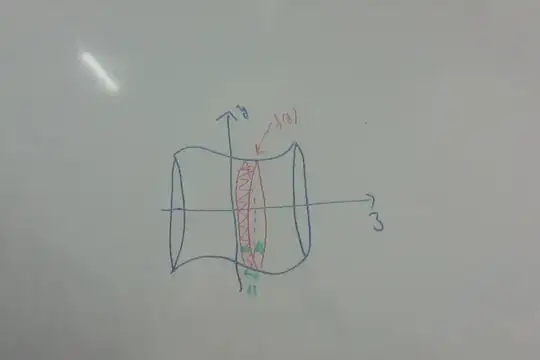I want to compute the area of a revolution surface generated by $f(x)$, i.e. of the surface $(u, f(u)\cos(v), f(u)\sin(v))$. I know it's $$\mathcal A=\int_{x}^y f(z)\sqrt{1+f'(z)}dz.$$
But why is my argument below wrong :
We sum the area of the infinitesimal cylinder of radius $f(z)$ and altitude $dz$ that should give us $$\int_x^y 2\pi f(z) dz,$$ but this is wrong, so maybe the altitude is in fact $df$, and thus I get $$\int_x^y 2\pi f(z)df=\int_x^y 2\pi f(z)\frac{df}{dz}dz=\int_x^y 2\pi f(z)f'(z)dz,$$ but it still wrong and I don't understand what's wrong in theis logic to sum area of infinitesimal cylinder of radius $f(z)$ and altitude $dz$ or altitude $df$. Could someone explain me ?
